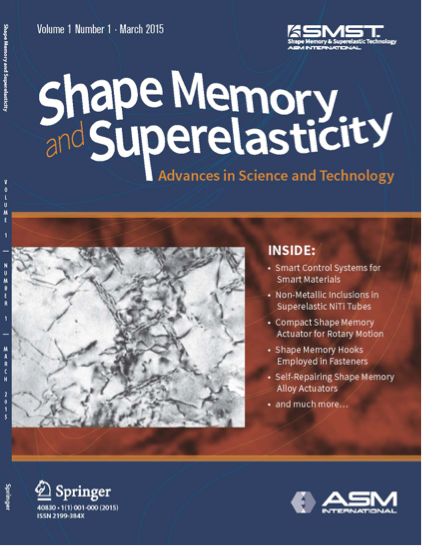The Shape Memory and Superelastic Technologies (“SMST”) Conference 2015, held in Oxfordshire, United Kingdom from May 18th – 22nd, featured a broad array of topics relevant to the medical device industry, a few of note which are included below:
Effect of Pre-strain and Sensitivity on Nitinol Fatigue
Historically, industry has predicted Nitinol fatigue durability on the basis of simulations and testing that have focused on mean strain and strain amplitude. Recent research highlighted the influence of a third dimension: pre-strain. Data was presented that reveals how the strain history experienced during manufacturing or assembly can have a surprising impact on the lifetime fatigue durability of an implant. These findings could play an important role in future FDA submissions.
Nitinol Thin Films
Nitinol Sputter Disposition Technology has advanced and is now enabling the production of thicker and more consistent Nitinol thin films. Additional work has also been completed to optimize and enhance material properties and performance characteristics.
Corrosion and Biocompatibility
An update was provided on a study in collaboration with the FDA to understand the effect of Nitinol oxide layer composition on localized corrosion resistance, uniform corrosion resistance and biocompatibility. The results from this study will provide a better understanding of how resistance to localized corrosion, as measured via the breakdown potential, relates and can be used to predict uniform corrosion behavior and in vivo biocompatibility of Nitinol. In addition, the results of this study may be used to establish acceptance criteria for localized corrosion resistance. This study also assesses the impact of fretting on in vivo corrosion resistance and biocompatibility by investigating overlapped stents.
SMST Fellowship: Additive Manufacturing
Results of research funded by the first SMST Fellowship were presented, highlighting the potential for new additive manufacturing methods developed for Nitinol. The University of Toledo team demonstrated the feasibility of fabricating nitinol structures with a range of densities, and highlighted the potential benefits for such engineered structures in orthopedic applications.
The topics above represent just a few of the interesting areas of research and we encourage you to view all the abstracts at: SMST_2015_FINAL.pdf
NDC’s papers and presentations from SMST 2015 can be found on our website:
- Plenary Session: A History of our Industry (T. Duerig, K. Melton)
- Plenary Session: Corrosion Resistance and Biological Response to Nitinol (C. Trepanier)
- The Influence of the R-Phase on the Superelastic Behavior of NiTi (T. Duerig, K. Bhattacharya)
- Effect of Pre-Strain on Nitinol Fatigue Life (A. Shamimi, T. Duerig)
- Sensitivity of Nitinol Fatigue Strain to Material Inputs in Finite Element Analysis (C. Bonsignore, K. Senthilnathan, T. Duerig, P. Saffari)
- Effects of Room Temperature Aging on Hydrogen-Charged Nitinol (T. Duerig, D. Madamba)
This year’s conference also marked the first publication of Shape Memory and Superelasticity: Advances in Science and Technology the official journal of The International Organization on Shape Memory and Superelastic Technologies. This online quarterly journal invites original peer-reviewed papers that focus on shape memory materials research.

For more information about NDC, please contact [email protected].